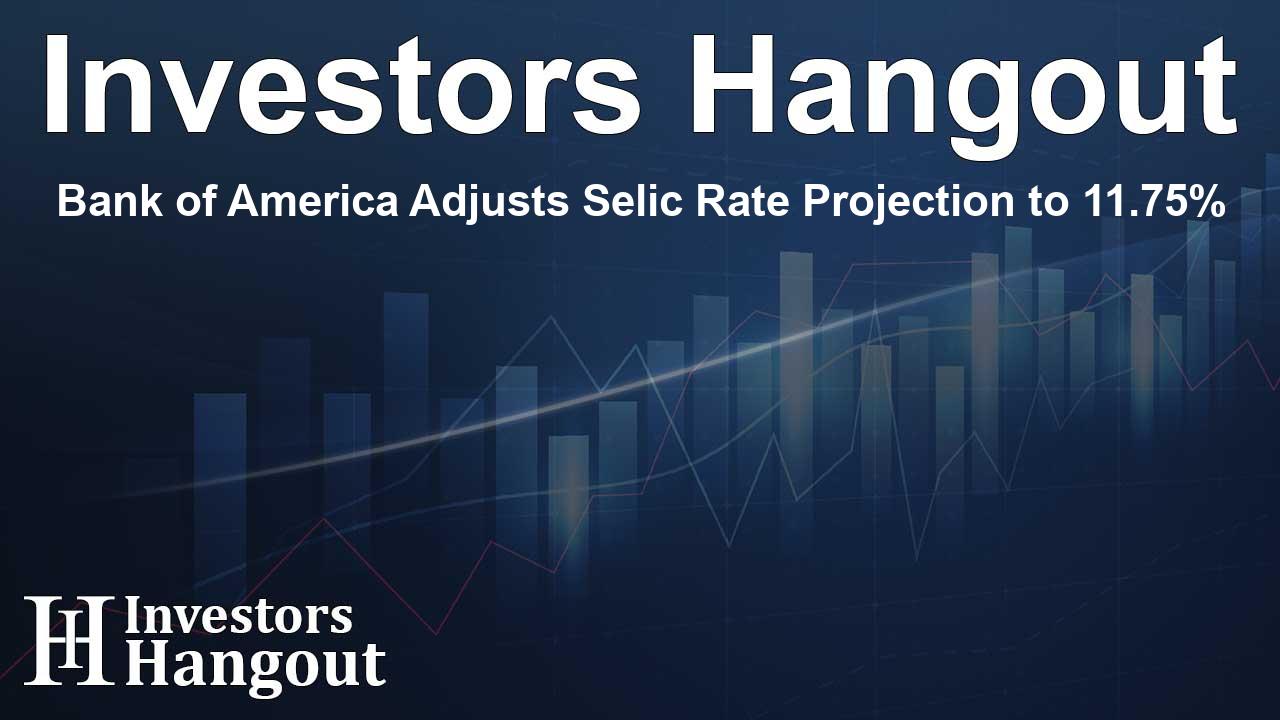Bank of America Adjusts Selic Rate Projection to 11.75%

Bank of America’s Updated Selic Rate Projection
Recently, Bank of America made headlines with a significant update regarding Brazil’s monetary landscape. The financial institution has revised its expectations for the country's Selic rate, forecasting that it will close the year at 11.75%. This adjustment suggests that the Central Bank's Monetary Policy Committee (Copom) is likely to initiate a tightening cycle, with an anticipated increase of 0.25 percentage points in the coming week.
Understanding the Implications of Rate Changes
The report from Bank of America sheds light on broader economic implications. They stated, "We expect Brazil to increase rates while other central banks are cutting, which may further reduce the pressure for future increases." This commentary highlights a contrasting strategy between Brazil and many other nations, emphasizing the unique challenges and decisions faced by the Central Bank in Brazil.
Phased Rate Increases Ahead
Looking beyond September, Bank of America predicts that there will be two additional increases of half a percentage point followed by a final hike of 0.25 percentage points in January. The culmination of these changes could see the Selic rate peak at 12% by January 2025. This trajectory underscores the bank's commitment to an aggressive tightening strategy amidst fluctuating global economic conditions.
Global Context of Monetary Policy
As interest rates in other parts of the world, including the U.S., are expected to decrease, Brazilian policymakers face a delicate balancing act. According to the economists behind the report, David Beker, Natacha Perez, and Gustavo Mendes, there's a real concern over the potential for fewer rate increases in Brazil as external benchmarks change. They maintain that the current rates in Brazil are already exceeded neutral levels, indicating an underlying caution regarding economic stability.
Inflation and Economic Activity Forecasts
The bank also provided estimates on inflation, predicting rates at 3.9% for 2024 and 3.6% for 2025. Factors impacting this projection include inflation expectations, a dollar valuation above R$5.50, and strong economic activity levels. The bank emphasizes that a consistent tightening cycle will be pivotal in stabilizing inflation expectations and strengthening the credibility of the Brazilian Central Bank in the eyes of domestic and foreign investors.
Robust Economic Activity in Brazil
Brazil’s economy is currently showing vitality characterized by a strong labor market, increased credit activity, and robust consumer demand. These factors, combined with supportive fiscal policies, contribute to a dynamic economic environment. Despite this, Bank of America suggests that prevailing economic conditions, paired with reduced fiscal stimulus, may lead to a slowdown in activity, potentially affecting the growth forecast of 2.7% for this year.
Market Response and Future Outlook
The recent Focus Bulletin released by the Central Bank highlighted a concurrent sentiment among economists. There was a notable rise in expectations for the Selic rate’s trajectory, elevating estimated rates for the end of 2024 from 10.50% to 11.25%. Such shifts in expectations reflect broader confidence or concerns regarding Brazil's economic future, showcasing the inherent uncertainties within the current global climate.
Frequently Asked Questions
What is the significance of the Selic rate?
The Selic rate is Brazil's benchmark interest rate, influencing borrowing costs and economic activity throughout the country.
What economic factors influenced Bank of America’s projections?
Factors include inflation predictions, dollar exchange rates, and overall economic activity levels, leading to an adjustment of rate expectations.
How does Bank of America view Brazil's current interest rates?
The bank believes that current rates are above neutral, indicating potential for future economic slowdown.
What are the implications of tighter monetary policy in Brazil?
Tighter monetary policy typically aims to control inflation but may also slow economic growth, impacting consumer spending and investment.
What does the future hold for Brazil's economic growth?
While currently forecasted at 2.7% growth for this year, there are both upward and downward risks depending on various economic conditions.
About Investors Hangout
Investors Hangout is a leading online stock forum for financial discussion and learning, offering a wide range of free tools and resources. It draws in traders of all levels, who exchange market knowledge, investigate trading tactics, and keep an eye on industry developments in real time. Featuring financial articles, stock message boards, quotes, charts, company profiles, and live news updates. Through cooperative learning and a wealth of informational resources, it helps users from novices creating their first portfolios to experts honing their techniques. Join Investors Hangout today: https://investorshangout.com/
Disclaimer: The content of this article is solely for general informational purposes only; it does not represent legal, financial, or investment advice. Investors Hangout does not offer financial advice; the author is not a licensed financial advisor. Consult a qualified advisor before making any financial or investment decisions based on this article. The author's interpretation of publicly available data shapes the opinions presented here; as a result, they should not be taken as advice to purchase, sell, or hold any securities mentioned or any other investments. The author does not guarantee the accuracy, completeness, or timeliness of any material, providing it "as is." Information and market conditions may change; past performance is not indicative of future outcomes. If any of the material offered here is inaccurate, please contact us for corrections.